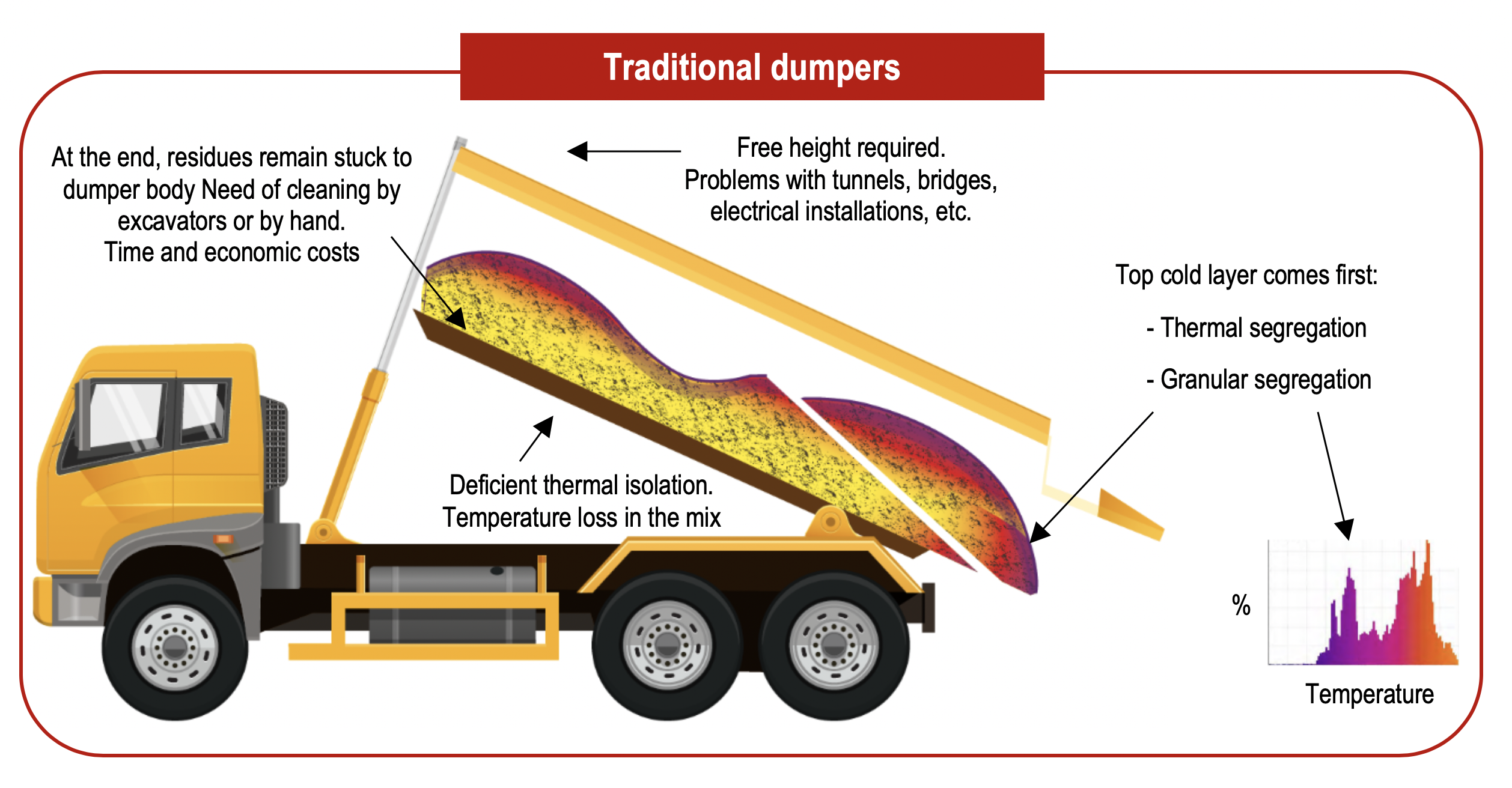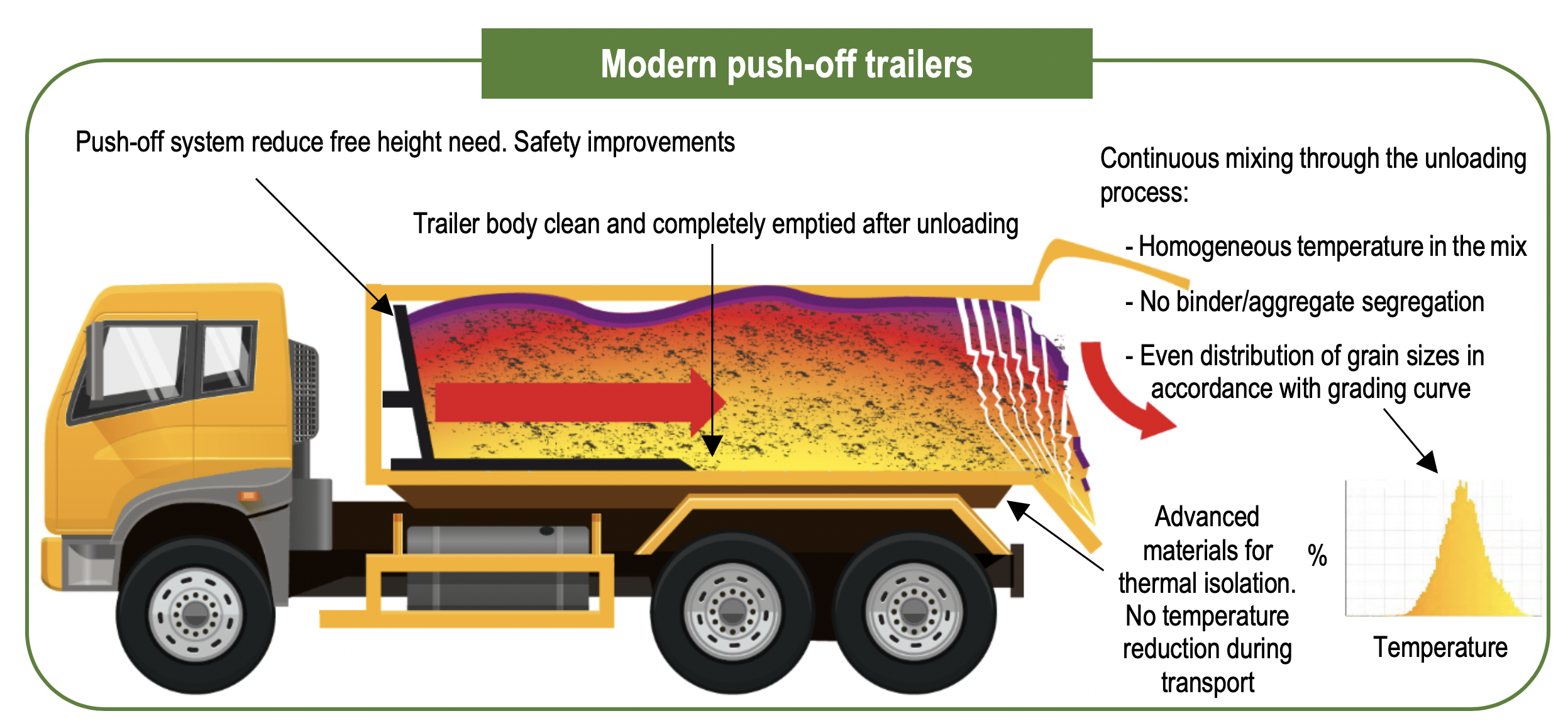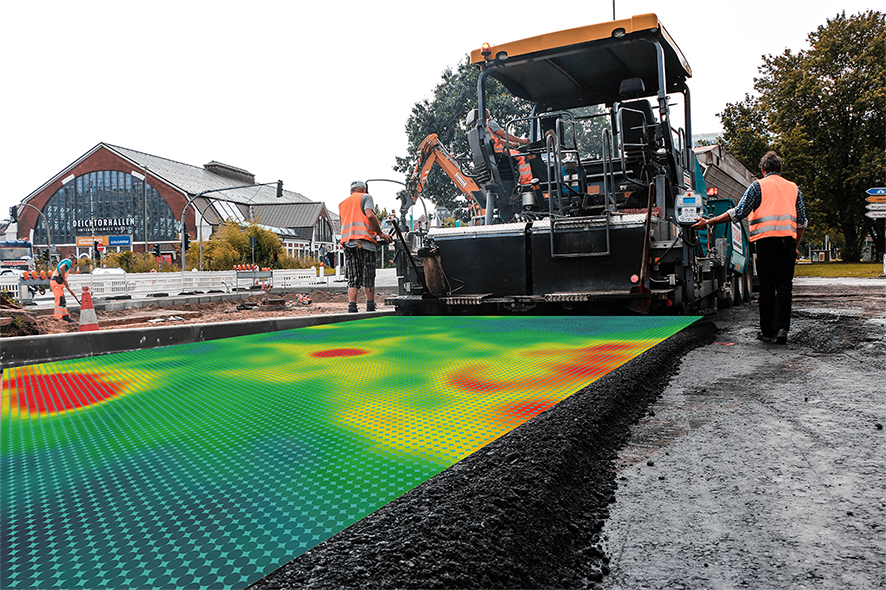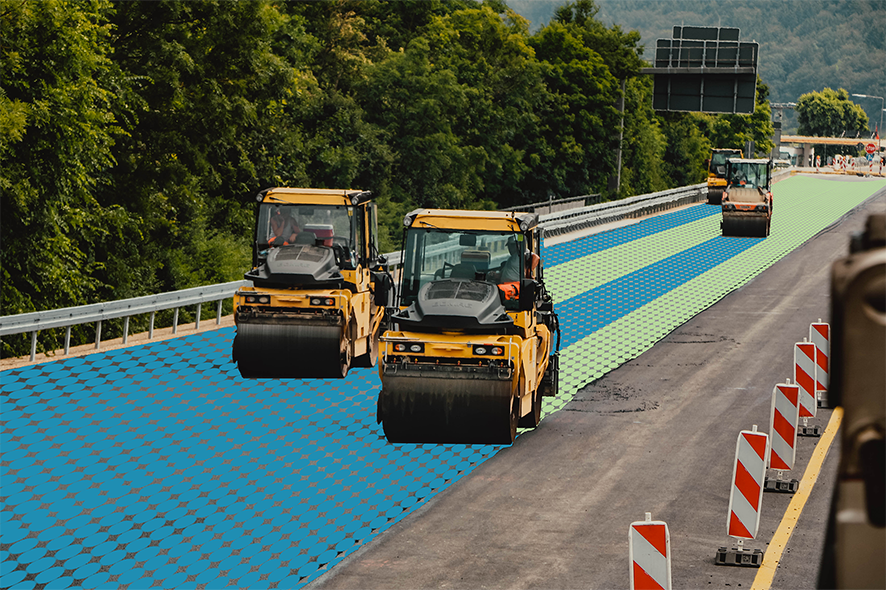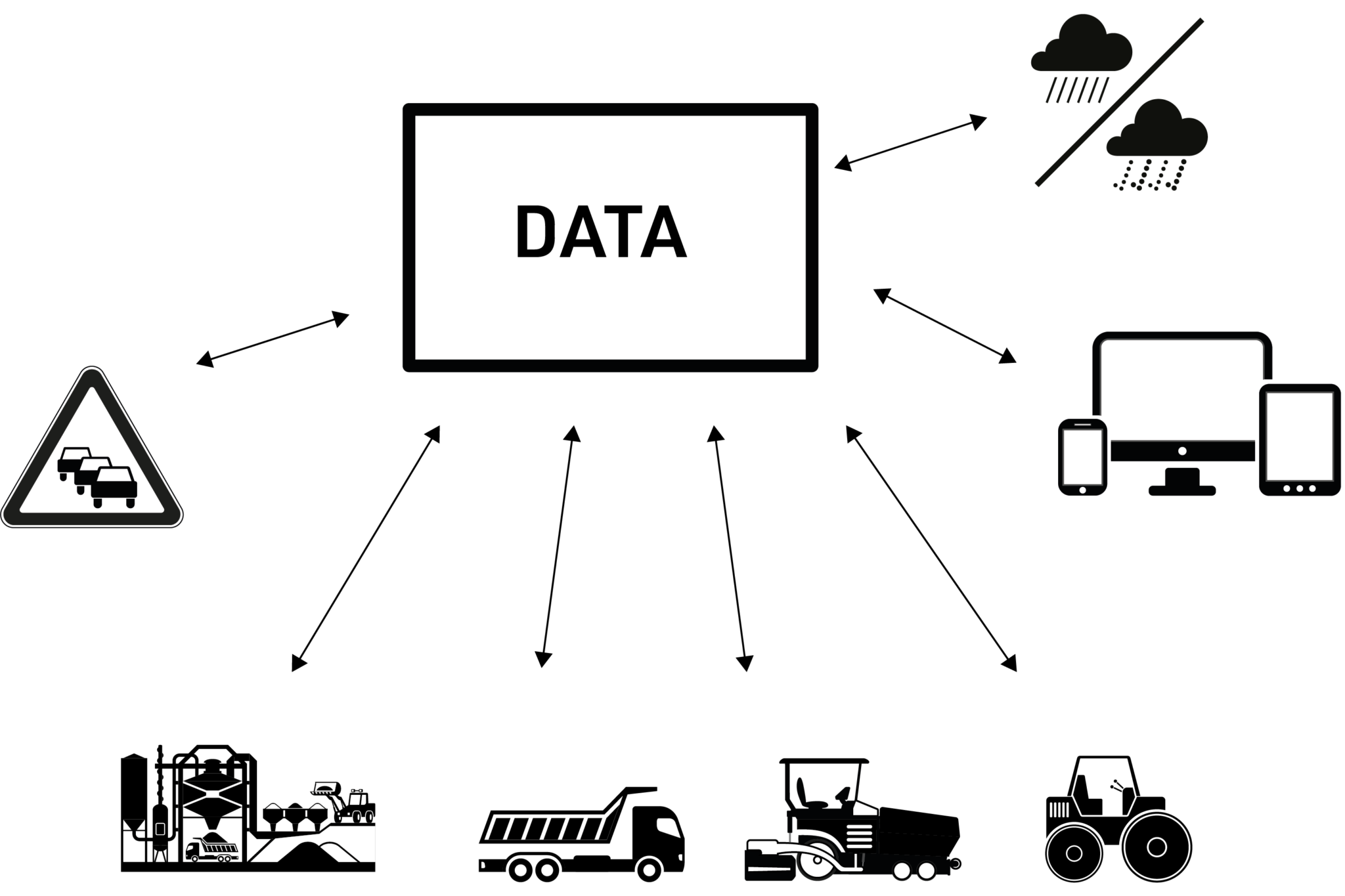The transportation of asphalt mixes from the plant to the worksite was in the past not given importance enough within the whole construction cycle of the roads. However, over the last years, asphalt industry learned that it is actually one of the most critical stages, as it can produce massive energy losses and affect the final quality and performance of the road.
One of the main technologies, developed in the last years to minimise the impact of transportation, is the combined use of push-off trailers and advanced isolating materials (Lambda values below 0.028 and R-values above 2.5). These new vehicles made obsolete traditional dumpers for several reasons:
Comparative between traditional dumpers (top) and modern push-off trailers (bottom)
- Temperature segregation: Although the use of non-isolated dumpers does not increase significantly the average temperature loss (between 2ºC and 5ºC) it does contribute to create layers of low temperature on the top and along the contact areas between the material and dumper’s body. When traditional dumpers unload the mix by tipping the box, the material comes first from these areas, generating drops of temperature in the laid-down mix. Modern trailers use advanced isolating materials, which minimise energy losses and push-off systems, which unload the mix without the need of tipping it. During this process, material from colder layers is continuously remixed with the material from the bottom, increasing significantly the thermal homogeneity.
- Granular segregation: During the loading at the asphalt plant, a granular segregation takes place, as long as fine particles find their way to the bottom, while coarse particles tend to roll over the surface, accumulating on the top and close to the lateral sides of the dumper. In this sense, push-off systems also produce the remix of the particles, as long as these fall out of the dumper.
- Safety and operability: One of the main limitations of traditional tipping dumpers is the need of free height. This often cause issues with tunnels, bridges or with electrical installations placed above the construction site. Push-off trailers avoid these problems increasing safety and operability.
- Vehicle cleaning: Another common limitation in traditional tipping dumpers is that part of the asphalt mix remains stuck to the body after unloading the batch. These residues are commonly scraped out by hand (using shovels and brushes) or by using an excavator, which requires time and manpower. In addition, this material (already paid for) must be wasted, which also involves extra costs. Push-off devices remove this problem, leaving the box clean even with difficult types of asphalt, such as OPA, PMA, LOA or DSHV.
- Load indication: New systems enable operator to load trucks efficiently and avoid overloading. The current weight in the bucket is indicated in real time to the driver on an onboard display. This can also select a target weight not to overload the truck and easily keep track of the total weight carried (useful for logging weight towards a pile).
- Logistics tools: In addition, different companies have developed digital tools to monitor and facilitate the smoot and steady delivery of asphalt from the plant to the paver. These systems track machines location and collect data about the material during the whole delivery process, which allows contractors to visualise and rectify truck scheduling and production, react quickly to potential problems (for example related to the temperature of the mix) and optimise performance. More information about this topic will be explained in the Section dedicated to “Job-site logistics tools”.

